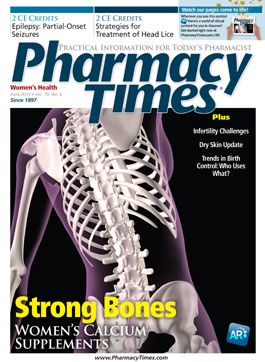
Publication
Article
Pharmacy Times
Pharmacy Law: Sorting Out Liability for DES-Related Damages
Author(s):
A US District Court rules on a lawsuit involving collective liability of DES manufacturers.

A US District Court rules on a lawsuit involving collective liability of DES manufacturers.
Issue of the Case
When a woman born in 1957 alleges that she suffered damages as a result of her mother ingesting diethylstilbestrol (DES) while pregnant, and the daughter files suit in federal court against a collection of pharmaceutical firms that manufactured or distributed the medication, must she be able to establish at trial which of the firms produced the actual medication consumed by her mother in order to prevail in a lawsuit?
Facts of the Case
In a somewhat unusual turn of events, this lawsuit was filed during 2010 in US District Court in New York where the plaintiff lived, but the case involved application of the law of the state of Texas. This was so because the injured plaintiff was born in Texas and her mother received the medication there pursuant to a prescription issued by a prescriber in Texas. Moreover, it was in federal court because the parties were based in different states.
The daughter alleged a number of forms of personal injury that had already occurred because of her in utero exposure to the medication along with increased risk of future damages. The defendants in the lawsuit numbered 18, all of them firms that had manufactured and marketed DES. One of the firms moved for summary judgment and the other defendants joined in that motion. Summary judgment means that the court rules in favor of 1 of the parties without conducting a full trial. This is generally based on the judge’s conclusion that there are no issues of material fact remaining to be the subject of a trial. If the conclusion is that the trial is unnecessary, the judge will enter judgment in favor of 1 of the parties, usually the moving party.
The Court's Ruling
The judge had received a recommendation from a magistrate judge, a minor judicial officer in the federal system, that the motion be granted and that all claims by the plaintiff be dismissed. The US District Court judge agreed with that recommendation and dismissed the lawsuit.
The Court's Reasoning
The plaintiff opposed the recommendation of the magistrate judge and the US District Court judge carefully reviewed the information evaluated by the minor judicial officer in arriving at the recommendation. The trial court judge is required to review the decision and recommendation to ascertain whether any part of the reasons advanced for opposition was proper. The judge concluded that a pivotal issue existed under Texas law and the plaintiff had not appropriately interpreted the law of that state.
The plaintiff was unable to identify which of the numerous manufacturers identified as defendants had actually produced the pharmaceutical used by her mother. The plaintiff argued that the law of Texas was unsettled on the issue known as the market share theory of liability. Under that approach several states have adopted a rule, known as market share liability, that multiple defendants will be held proportionately liable to the injured plaintiff who cannot establish which manufacturer sold the product that allegedly caused the injury. The proportion of liability attributable to any 1 firm is determined by assessing that defendant firm’s share of sales in the relevant market. This approach was first fashioned by an appellate court in California, and then adopted in a few other jurisdictions.
That approach runs contrary to the traditional legal rule known as “product identification,” meaning that a key element of a product liability claim is that the actual thing causing the legally cognizable damages must be identified. It is not sufficient for a plaintiff to establish that the injuries were caused by a type of product; the specific product made or sold by the defendant must be identified.
Reviewing decisions by the courts in the state of Texas, this US District Court in New York concluded that Texas does not permit recovery under a collective liability or market share theory. Indeed, the decision in this case specified that in that state it is a fundamental principle of traditional products liability law that the plaintiff must prove that the defendants supplied the product that caused the injury. In a 2005 case the ruling had been that the plaintiff was required to present “evidence that the defendant supplied the specific doses that allegedly caused the plaintiff’s injury.”
It did not help the plaintiff’s case that her mother presented an affidavit to the court which contradicted an earlier statement made under oath during a deposition about which firm’s product she might have consumed. Additionally, no insight about which brand was dispensed was available from the pharmacist currently at the pharmacy when he was asked about the brand used some 50 some years earlier.
The “market share liability” doctrine continues to be used in a clear minority of states with the majority rule being that the specific product alleged to have caused the injuries must be identified with particularity. This again highlights the importance of good record keeping.
Dr. Fink is professor of pharmacy law and policy and Kentucky Pharmacists Association Endowed Professor of Leadership at the University of Kentucky College of Pharmacy, Lexington.

2 Commerce Drive
Cranbury, NJ 08512
All rights reserved.





